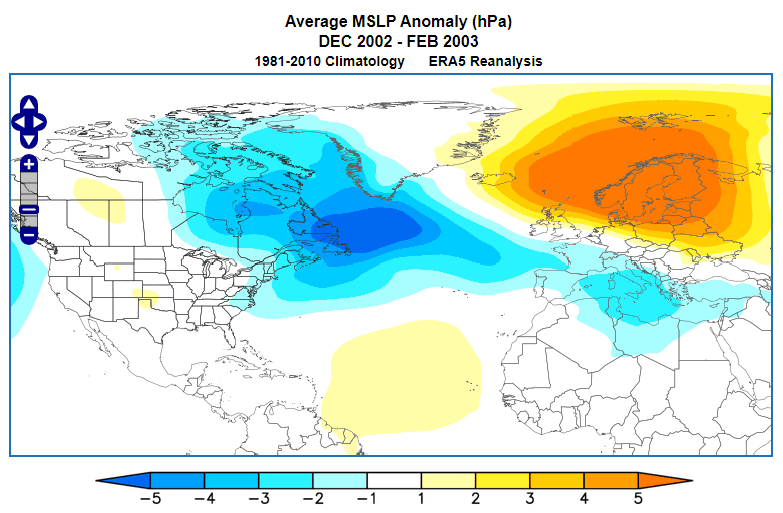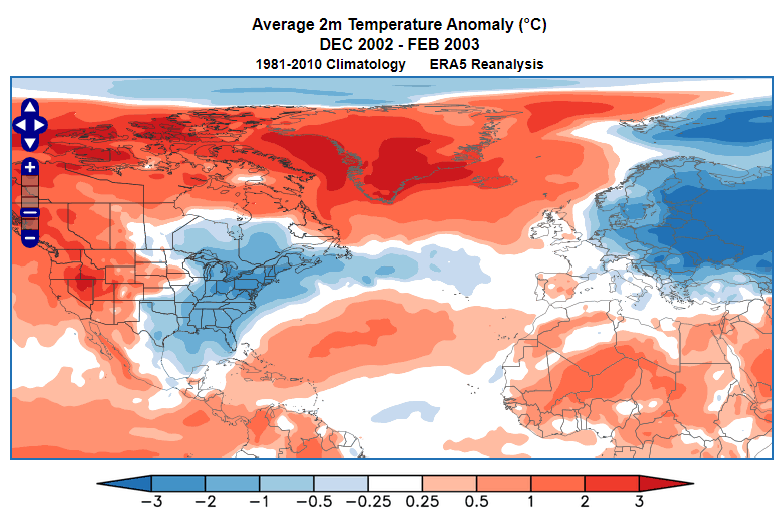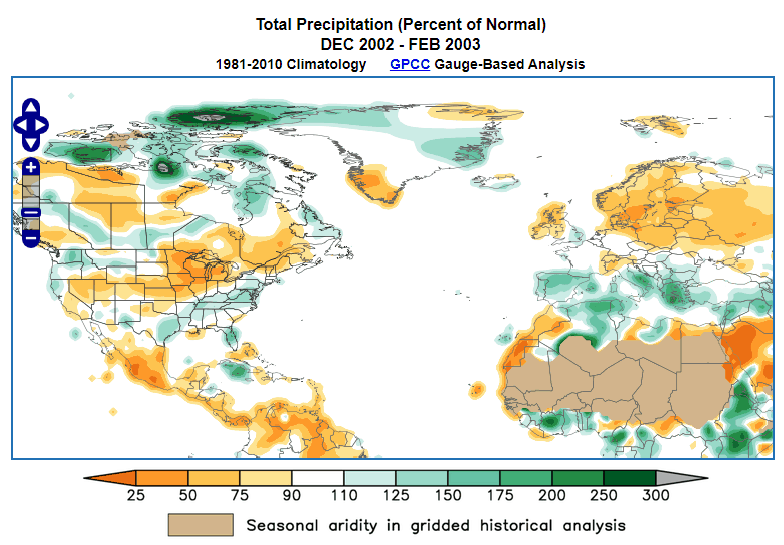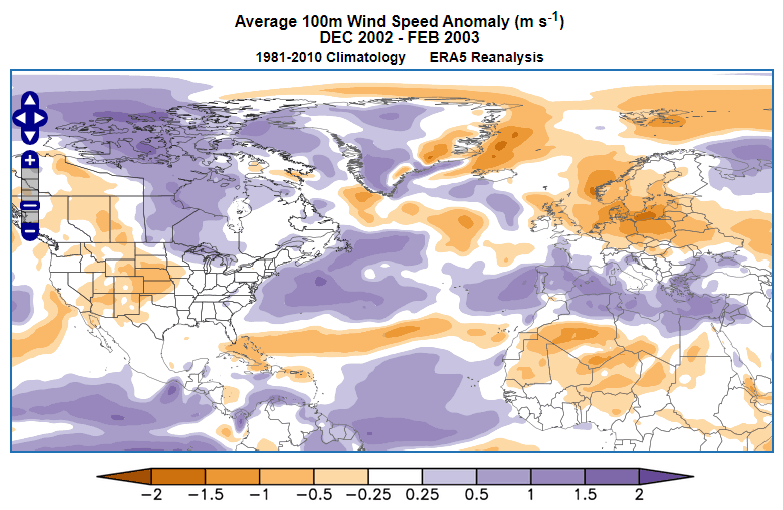On November 18 2019, the World Climate Service issued its seasonal forecast and discussion for winter (December-February) 2019-2020 in the U.S. and Europe. WCS seasonal outlooks include an overview of expected climate anomalies, key drivers, and risk factors for the upcoming three-month season, and our forecast document contains a detailed discussion of available predictors, including dynamical model forecasts and statistical and climate analog guidance.
A Remarkable Climate Analog: 2002 – Introduction
Analog analysis has long been a staple of the WCS methodology for seasonal forecasting, and we invariably rely on diverse sets of climate analogs derived from numerous aspects of current global climate patterns. Only on rare occasions do we focus on individual climate analog years, because the climate phase space is rarely a very good match to any previous year in the modern history in more than a few respects; there are nearly always significant differences from any candidate analog year. Moreover, the degrees of freedom in the climate system are too numerous to expect a close correspondence with any past year to continue into the future, and so any search for “the perfect climate analog” is a fool’s errand (even if the climate were assumed to be unchanging).
A Remarkable Climate Analog: 2002 – Similar Years
Nevertheless, the latest WCS seasonal forecast report discusses a very notable confluence of similarities between the present climate and that of winter 2002-2003. In keeping with usual practice, the WCS winter forecast is not unduly influenced by the 2002-03 analog, but the degree of similarity is so striking that it is worth considering the 2002-03 outcome as a plausible outcome and risk scenario for winter 2019-20. The following list of similarities was presented in the forecast document and is reproduced here:
- 2002 is the top QBO analog year, based on the 12-month evolution of the 30mb QBO index
- The Indian Ocean Dipole was strongly positive in September and October 2002, and tropical convective patterns were similar; 2002 is the third best analog year for 200mb equatorial velocity potential
- A region of highly anomalous warmth developed in the northeastern Pacific in late summer 2002 and persisted through autumn, similar to 2019
- Arctic sea ice was low in summer 2002 and set a record at the time for low September ice extent
- The October Northern Hemisphere circulation was similar in 2002, with Arctic blocking, a trough over northwestern Europe, and a very similar ridge-trough pattern over western North America. The November MSLP pattern was also similar with respect to high pressure north of Scandinavia, low pressure near the British Isles, and low pressure south of the Aleutians.
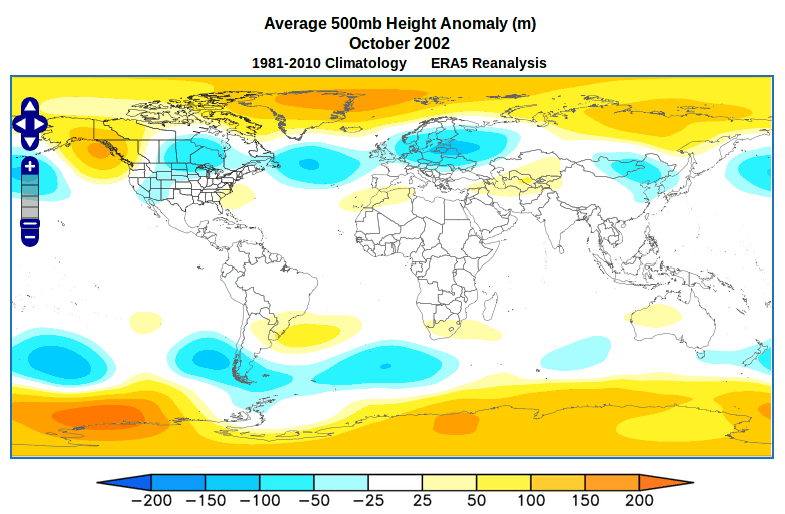
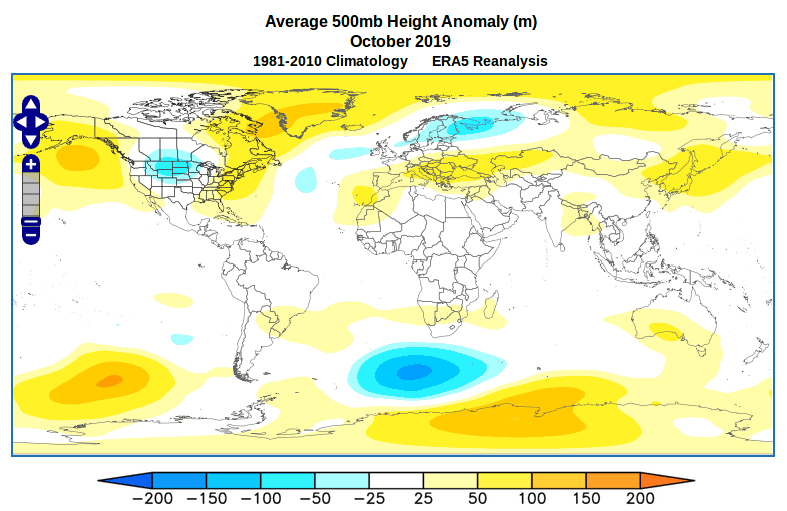
- October 2002 had the highest snow cover on record (1967-present) over North America; October 2019 was the third highest
- The 10mb polar vortex was much stronger than usual in the first half of November 2002, but the Arctic Oscillation was negative for November, similar to this year. No other year provides such a close match to this unusual combination, although 2018 is also a good analog.
- Remarkably, 2002 is nearly a perfect match to 2019 (better than any other year since 1900) for Central England Temperature in August, September, and October. Perhaps coincidentally, October 2002 England & Wales precipitation was also nearly identical to 2019, and November was also extremely wet (October-December 2002 was the third wettest such period on record).
- 2002 and 2019 are the only years on record with a strong Southern Hemisphere SSW (Sudden Stratospheric Warming) event; both of these occurred in late austral winter and led to Southern Hemisphere blocking in both October and November.
The most significant difference between 2002 and 2019 is that 2002 had more warmth in the eastern equatorial Pacific and much less in the West Pacific; El Niño was more classical (East Pacific) rather than Modoki-like. There was also much less anomalous warmth in the subtropical and northern North Pacific in 2002.
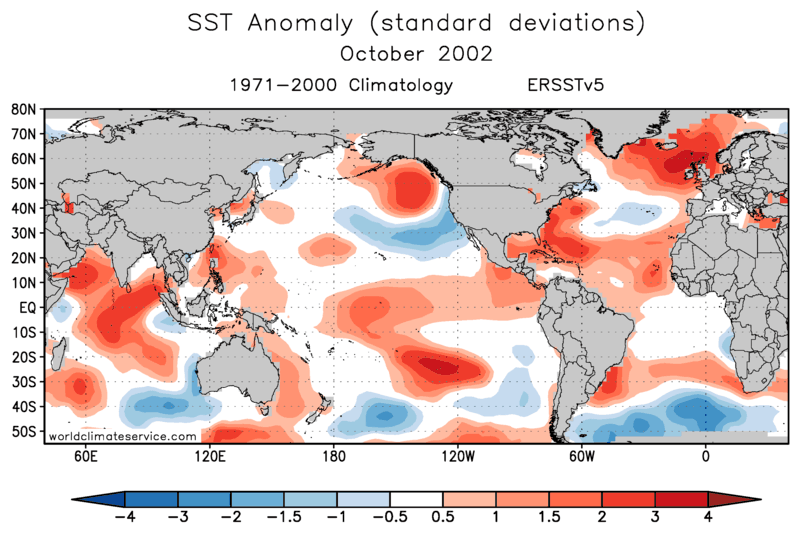
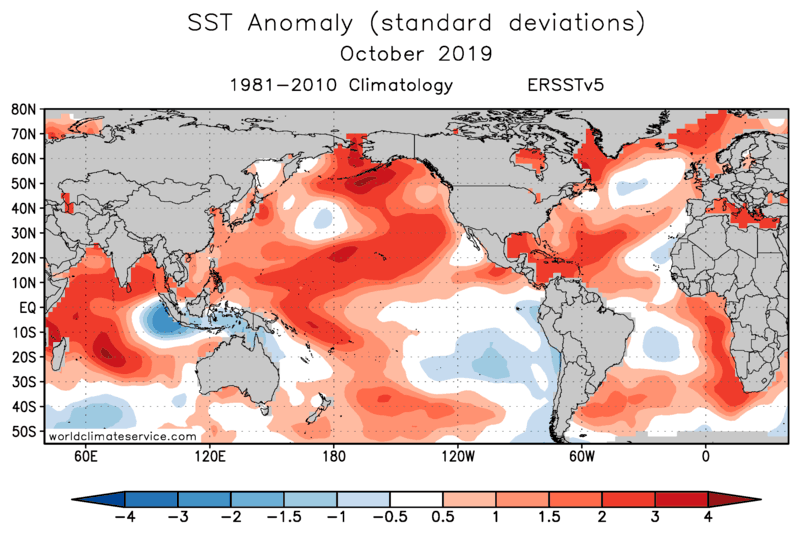
A Remarkable Climate Analog: 2002 – Conclusion
In view of the extensive and remarkable similarities between 2002 and 2019, it is tempting to conclude that winter 2019-2020 will be closely analogous to 2002-2003, with a strongly blocked pattern, unusual cold in the eastern two-thirds of Europe and the eastern United States, and reduced precipitation and wind in central and northern Europe (see below). However, as noted above, the WCS approach is to treat individual analog years with caution, regardless of how impressive the similarities appear to be. The combined consensus of a large array of dynamical and statistical predictors is a more reliable guide to likely seasonal patterns, and the WCS forecast is constructed accordingly, but the winter of 2002-2003 should be regarded as a plausible alternative scenario.
